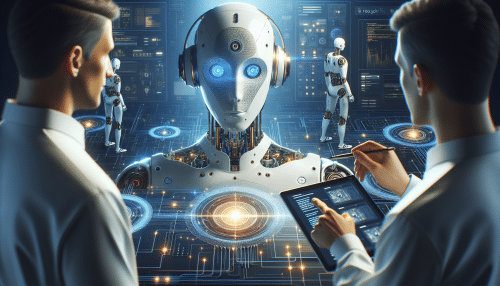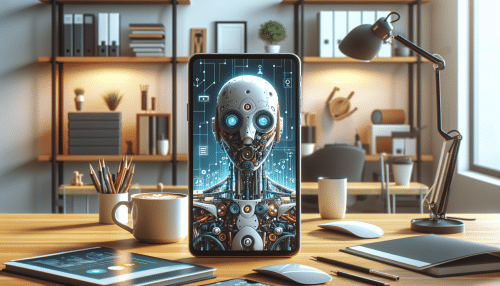Ways You Interact With Artificial Intelligence Daily
Brian Taylor August 28, 2025
Most people encounter artificial intelligence (AI) more often than they realize — from voice assistants and navigation apps to social feeds and e-commerce. This guide reveals how AI operates behind the scenes and spotlights its role in shaping daily digital experiences.
Unlocking Artificial Intelligence in Daily Life
Artificial intelligence isn’t just a concept in science fiction or reserved for high-tech laboratories. As technology continues to evolve, AI is becoming woven into routines everywhere. Each day, millions engage with smart tools powered by machine learning — often without even realizing it. The influence of AI stretches from mundane chores to how information is processed at work and at home. It’s fair to say that artificial intelligence is nearly invisible but always present, which contributes to both its convenience and, at times, the mystery surrounding how it operates.
Personal digital assistants are one of the most recognizable artifacts of current artificial intelligence. Tools like Siri, Google Assistant, and Alexa respond to spoken queries almost as if by magic. They do this by leveraging natural language processing and a growing database of human requests and answers. Over time, these tools learn user preferences, adapting their replies and even anticipating common questions. Using them can make previously manual searches for information, weather, and calendar reminders feel effortless and human-like.
Behind the scenes, artificial intelligence also powers less obvious experiences such as social media feed curation and fraud detection. Recommendation algorithms analyze preferences and behaviors — from the content you pause to watch, to which links you click or ignore. This machine intelligence then tailors feeds, advertising, and even email spam filtering with uncanny accuracy. The result is an environment that feels handpicked, efficient, and ever-responsive to personal interests and habits, even though much of the process remains invisible to human eyes.
Your Smartphone as an AI Hub
The smartphone is perhaps the single most concentrated location of consumer-facing AI in modern lives. Every app download, swipe, and voice interaction is a touchpoint for machine learning. For example, predictive text and autocorrect tools rely on AI to adapt to individual style over time — making suggestions that become almost eerily accurate. Even image recognition, such as identifying faces in photo libraries, uses deep learning techniques to organize albums and memories seamlessly.
Navigation tools utilize AI in more ways than one. When you open Google Maps or Apple Maps to search for the fastest route home, you’re using a system that’s digesting vast quantities of real-time location data. The technology can anticipate delays, suggest alternate routes, and provide personalized recommendations for restaurants or gas stations nearby. It’s not just about convenience; AI-driven navigation ensures efficiency and safety by analyzing patterns and presenting you with optimal choices as new data rolls in.
The camera apps in smartphones are rapidly advancing thanks to embedded AI. Features like night mode, scene optimization, and automatic focus rely on algorithms that scan conditions and objects, making professional-level photography accessible to all. AI doesn’t just process images; it actively interprets them, deciding the best exposure, color balance, and even suggesting selfie poses. These invisible enhancements have set a new standard in usability and led to a democratization of digital creativity and sharing.
Voice Assistants and Smart Speakers Enhancing Everyday Tasks
Using voice assistants has gone from novelty to necessity for many households. Devices such as Amazon Echo and Google Nest rely on advanced AI for speech recognition and interaction. The ability to set reminders, play music, or control smart lights with a brief command is supported by neural networks trained on millions of speech samples. As these assistants become more integrated into smart homes, their ability to manage complex multi-step tasks grows, quietly streamlining busy routines.
These smart speakers connect with various home devices and services, acting as a centralized hub for digital living. Through the power of AI, they learn from user behavior—identifying patterns such as regular alarm settings or preferred playlists. This adaptability allows a more customized and responsive experience. By continuously updating software and ingesting feedback, smart assistants evolve, providing more reliable and context-aware suggestions.
AI also plays a protective role in smart speakers. Voice identification and recognition systems can distinguish individual voices, enabling personalized responses or restrictions for specific users (such as children). Additionally, these systems can now detect security events, offering alerts for sounds like glass breaking. Integration of continuous machine learning allows these assistants to improve at understanding accents and specific household environments, demonstrating AI’s pivotal role in both convenience and digital safety.
AI-Driven Personalization in Social Media and Entertainment
Social platforms are hyper-reliant on artificial intelligence for content selection and moderation. When you scroll through customized news feeds or receive suggested friends and groups, AI is actively running predictive analytics in the background. Recommendations draw on a mixture of public data, user preferences, and behavioral signals, ensuring an ever-refreshing flow of relevant posts, stories, and advertisements. This curation aims to maximize both engagement and satisfaction while subtly driving online trends and conversations.
Streaming platforms like Netflix and Spotify also deploy AI to curate viewing and listening lists. By analyzing watch history, search activity, and even user ratings, these services develop a taste profile. The more the services are used, the more precise the suggestions become—offering obscure artists, genres, or series that might otherwise stay hidden. This creates a highly tailored entertainment experience that continuously adapts over time to new interests.
AI systems are constantly scanning uploaded content for copyright, offensive material, and fraud. Automated content moderation combines rules-based logic with deep learning, helping to ensure community guidelines are upheld globally. The impact of AI moderation is profound—sometimes controversial—but undeniably vital for protecting users, improving accessibility, and maintaining a balance between freedom of expression and online safety.
Machine Learning in E-Commerce and Online Shopping
Artificial intelligence is revolutionizing e-commerce, from personalized product recommendations to dynamic pricing models. When users browse an online shop, sophisticated recommendation engines process browsing history, cart contents, and patterns shared by millions of other customers. Over time, AI learns how to predict what a shopper might want next, presenting options that drive discovery and streamline shopping experiences. This optimizes convenience and offers retailers data-driven insight into consumer habits.
The role of AI extends to the security of online shopping as well. Machine learning algorithms monitor every transaction, detecting suspicious activity by comparing it to normal customer behavior. This real-time analysis helps prevent fraud and protect sensitive payment information. As cyber threats evolve, AI systems adapt quickly—often before human security teams realize a new threat exists—contributing to a safer online marketplace.
AI also powers chatbots and virtual assistants, guiding users through shopping as if they were working with a human representative. These bots answer questions, resolve simple issues, and provide support around the clock. They improve with each interaction, using natural language processing to understand intent and context, leading to greater accuracy and increased customer satisfaction in digital commerce. The rapid evolution of AI in this area suggests it will soon become indispensable for both sellers and shoppers.
Navigating AI in Healthcare Apps and Wearables
Healthcare is embracing artificial intelligence, especially in the realm of personal wellness and fitness technology. AI algorithms within wearable devices—like smart watches and fitness trackers—monitor physical activity, sleep, and heart rate trends. By analyzing these patterns, apps can alert wearers to subtle health changes and suggest habits for improvement. This quick, accessible approach has changed how individuals monitor well-being outside clinic visits.
Many health tracking apps use AI to provide tailored recommendations based on a user’s history and behavior. Whether it’s offering advice on exercise routines or nudging users to take medication, these apps adapt over time for a more personalized approach. AI also enables faster access to medical information and online urgent care options, which is especially useful for users living far from traditional healthcare providers.
Some AI-driven systems are increasingly involved in early detection of potential illnesses by spotting risk factors from collected data. While such insights don’t replace professional medical advice, they prompt timely action. The integration of privacy protocols and secure data management is paramount, ensuring users’ health information remains confidential even as AI becomes more powerful and accurate. The promise of AI in healthcare continues to grow alongside ethical safeguards and innovation.
References
1. National Institute of Standards and Technology. (n.d.). Artificial Intelligence. Retrieved from https://www.nist.gov/artificial-intelligence
2. U.S. Department of Health & Human Services. (2022). Artificial Intelligence in Health Care. Retrieved from https://www.healthit.gov/topic/scientific-initiatives/artificial-intelligence
3. Stanford University. (2021). Artificial Intelligence Index Report. Retrieved from https://aiindex.stanford.edu/report/
4. Pew Research Center. (2022). How Americans View Data Privacy. Retrieved from https://www.pewresearch.org/internet/2022/03/09/how-americans-view-data-privacy/
5. World Economic Forum. (2021). AI Governance: A Holistic Approach to Implement Ethics into AI. Retrieved from https://www.weforum.org/agenda/2021/11/holistic-approach-implement-ethics-ai/
6. Brookings Institution. (2023). Algorithmic Bias Detection and Mitigation: Best Practices and Policies. Retrieved from https://www.brookings.edu/articles/algorithmic-bias-detection-and-mitigation-best-practices-and-policies/





